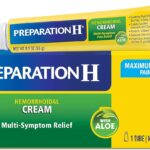Understanding Piles: Causes, Symptoms, and Effective Management
Piles, haemorrhoids, causes of piles, symptoms of piles, home remedies for piles, medical treatments for piles, prevention of piles
Understanding Piles: The Silent Struggle Unveiled
Piles, medically known as haemorrhoids, silently afflict millions worldwide, often leaving individuals suffering in silence. However, confronting this ailment is crucial, as awareness can lead to effective management and relief. In this comprehensive article, we aim to demystify piles by delving into their nature, causes, symptoms, and the various means of dealing with this common yet unspoken discomfort.
Table of Contents
Introduction
- What Are Piles?
- Types of Piles
- Internal Piles
- External Piles
- Thrombosed Piles
- Causes of Piles
- Symptoms of Piles
- When to Seek Medical Help
- Home Remedies for Piles
- Dietary Changes
- Sitz Baths
- Topical Ointments
- Medical Treatments
- Rubber Band Ligation
- Sclerotherapy
- Hemorrhoidectomy
- Prevention
Conclusion
- Frequently Asked Questions (FAQs)
Introduction
Piles, more commonly recognized as haemorrhoids, are a source of discomfort for many. However, understanding what they are and how to address them is essential for leading a more comfortable and pain-free life. This article is dedicated to unravelling the complexities of piles, offering insights into their various types, underlying causes, associated symptoms, and effective management strategies.
- What Are Piles?
Piles also referred to as haemorrhoids, are swollen blood vessels located in and around the rectum and anus. These vascular structures, resembling cushions, aid in controlling stool but can turn problematic when they become inflamed or enlarged.
- Types of Piles
- Internal Piles: These develop inside the rectum, often manifesting as painless but potentially leading to rectal bleeding during bowel movements.
- External Piles: External piles occur under the skin around the anus and can be painful, itchy, and prone to bleeding.
- Thrombosed Piles: Thrombosed piles are external piles that have developed blood clots, resulting in severe pain and swelling.
- Causes of Piles
Piles can be attributed to various factors, including straining during bowel movements, chronic constipation or diarrhoea, obesity, and a sedentary lifestyle.
- Symptoms of Piles
Common symptoms include rectal bleeding, discomfort or pain during bowel movements, itching, and swelling around the anal region.
- When to Seek Medical Help
If you experience persistent bleeding, or severe pain, or find that your symptoms do not improve with home remedies, it’s imperative to consult a healthcare professional.
- Home Remedies for Piles
- Dietary Changes: Modifying your diet to include fibre-rich foods, increased water intake, and avoiding spicy foods can help alleviate constipation and facilitate less painful bowel movements.
 Sitz Baths: Soaking in warm water for about 15 minutes can provide relief from the discomfort
Sitz Baths: Soaking in warm water for about 15 minutes can provide relief from the discomfort

Sitz Baths and itching associated with piles. https://amzn.to/45ZqJBU

- Topical Ointments: Over-the-counter creams and ointments can

 helphttps://amzn.to/3QGgcHk reduce itching and discomfort; however, it’s crucial to consult a doctor before using them.
helphttps://amzn.to/3QGgcHk reduce itching and discomfort; however, it’s crucial to consult a doctor before using them.
- Medical Treatments
- Rubber Band Ligation: This procedure involves placing a small rubber band at the base of the pile, effectively cutting off its blood supply, causing it to shrink and eventually fall off.
- Sclerotherapy: A chemical solution is injected into the pile, leading to its shrinkage and eventual disappearance.
- Hemorrhoidectomy: In severe cases, surgical removal of the haemorrhoids may be necessary.
- Prevention
To prevent piles, maintaining a high-fibre diet, staying well-hydrated, regular exercise, and avoiding straining during bowel movements are all essential.
Conclusion
Despite being a somewhat taboo topic, piles are a common and treatable condition. By comprehending the causes, symptoms, and available treatments, you can take charge of your health and find relief from the discomfort. Don’t endure this silently – seek help and regain your comfort.
- Frequently Asked Questions (FAQs)
Q 1: Can piles go away on their own?
- A. Mild cases of piles may resolve with dietary and lifestyle changes, while severe cases may require medical intervention.
Q 2: Are piles a serious medical condition?
- A. Piles are generally not life-threatening, but they can cause significant discomfort and pain, necessitating medical advice for persistent symptoms.
Q 3: Can dietary choices alone prevent piles?
A . Dietary changes are a crucial part of preventing piles, but maintaining a healthy lifestyle, including regular exercise and avoiding straining during bowel movements, is equally important.
Q 4: Are there long-term complications associated with piles?
- A. Piles can lead to complications such as chronic bleeding or strangulation of the haemorrhoid. Timely management can help prevent these complications.
Q 5: How can I make lifestyle changes to prevent piles?
- A. Lifestyle adjustments encompass maintaining a high-fibre diet, adequate hydration, regular exercise, and avoiding prolonged sitting on the toilet. These changes can significantly reduce the risk of developing piles.


